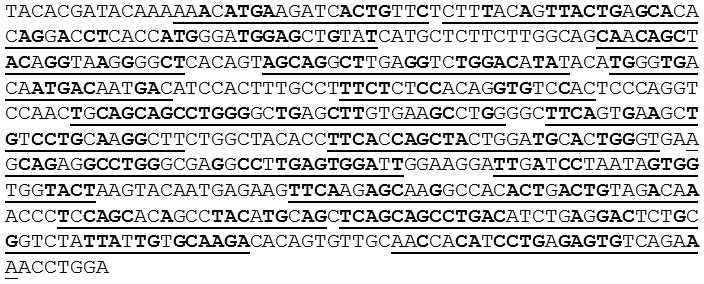XI.6 Many genes exhibit internal periodicity due to the presence of multiple tandem repetitions of short sequence motifs
The study of sequences and the inner structures of the individual genes is still in its infancy; nonetheless, at least some results are beginning to emerge.The existence of more or less obvious periodicity, following from the repetition of the same or similar sequences of motifs at a great many sites of a single gene is a very obvious phenomenon encountered in this type of study (Ohno 1982; Ohno 1985; Ohno 1984b; Korotkov et al. 1999).In most contemporary genes, this periodicity is masked or completely eliminated through mutations that occurred during evolution.Nonetheless, detailed study frequently reveals that the original genes were probably formed as multiple tandem repetition of a certain short oligonucleotide (Fig. XI.3).The length of such a oligonucleotide is very variable, but most frequently varies between 8 and 20 nucleotides.Sequences of oligonucleotides described to date differ substantially.

Fig. XI.3 Internal periodicity of genes. Sequences coding the variable part of the heavy immunoglobulin chain, including the original sequence of the hydrophobic peptide (similar to all the genes of the immunoglobulin superfamily), exhibit the presence of internal repetition of the length of the original 48 pairs of bases. In the depicted section, the given motif occurs sixteen times (underlined), where the presence of the same bases as in the original sequence TTC–AGC–AGC–CTG–ACT–GGA–TAT–GAC–CTG–GAG–TGG–ACT–TAC–TGC–GCA–AGA exceeds 50% (bold letters). Simultaneously, this motif can be derived from the AGCTG AGCTG AGCTG GGGTG sequence, i.e. from a motif that is extremely common in the nocoding parts of the genome and whose function here is to prevent random formation of promoters for RNA-polymerase II by random mutation (see XI.6.2.4). Homologies were sought, taking into account the sequence of aminoacids encoded in the relevant DNA section. Modified according to Ohno (1982).
It is currently possible to only guess at the reasons for this internal gene periodicity.Basically, there are three possibilities.Theperiodicity could have been formed prior to the emergence of the genetic code, and could thus in some way reflect the original mechanism of autoreproduction of nucleic acid sections (see X.3.2, the gene hypothesis of the origin of life).The periodicity could also have been formed only under conditions of the existence of the genetic code, and could thus reflect certain properties of this code and properties of the proteosynthetic apparatus.The third possibility is that the periodicity of genes originated only secondarily, independent of the origin of genes, through the action of processes connected with molecular drive.s
